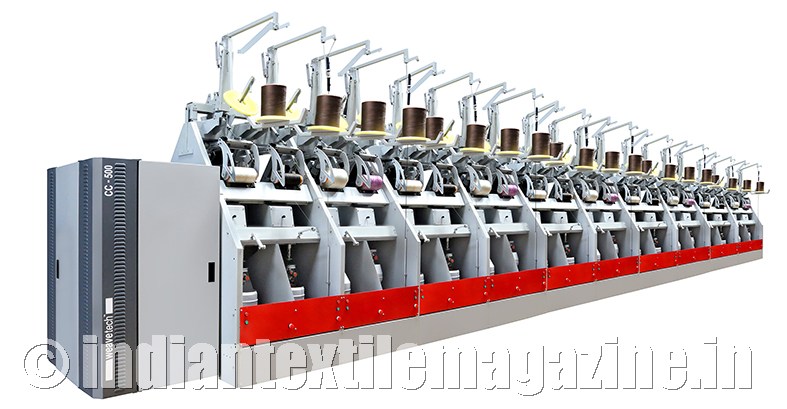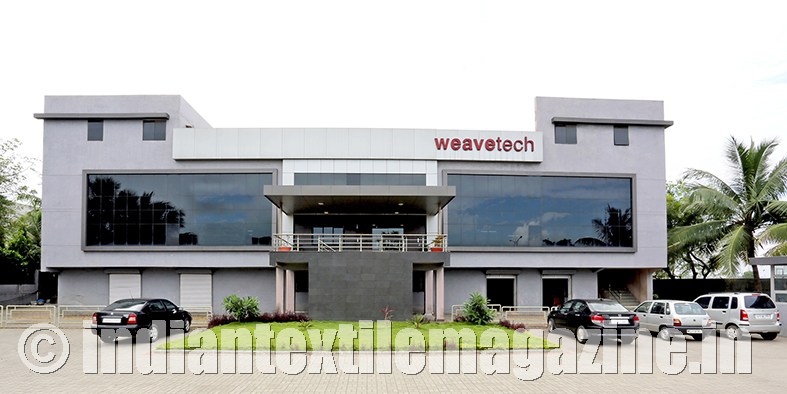Sustained leadership in filament segment
Founded in the 1980s under the Alidhra Group marquee, it has been a long journey for Alidhra-Weavetech since the split of Alidhra Group. With a new-found freedom to innovate, Weavetech has registered a growth of over 1600% growth over the last decade, one of the highest in the industry.
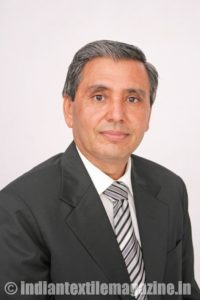
With its perseverance and commitment towards a long-term vision, Weavetech has not only achieved great heights in the textile industry but has maintained its hold and reputation in the industry. As a manufacturer of world-class machinery, Weavetech has set an example for the players in the industry, new and old alike.
Overcoming all the challenges, Weavetech has grown consistently with its focus on innovating and delivering value-added solutions for the industry. With the domestic sales taking the lead, the company has seen a rising graph and expects these statistics to escalate further as exports increase.
With the rupee value depreciating against the dollar, the company is looking forward to target a growth in exports. The domestic market and prevailing trends have favored the company so far and with the disposable income of the middle class rising, there will be a substantial increase in consumption. This will be aided by reformed goods & service tax and income tax policies, which will in turn help the entire merchant economy to grow.
Weavetech, over the last decade, has devoted 80% of its focus to the filaments sector rather than the traditional natural fibers. Commenting on the unusual phenomena, Mr. Chintan Thumar, Executive Director of the company, said: “The filament industry is replacing a big portion of the natural fiber industry, especially in the lower range garments. This is one of the reasons why the industry is growing very fast. Apart from that, the saturation that the spinning industry faces in the market does not have a major impact on the filaments industry. Hence it proves to be a profitable sector”.
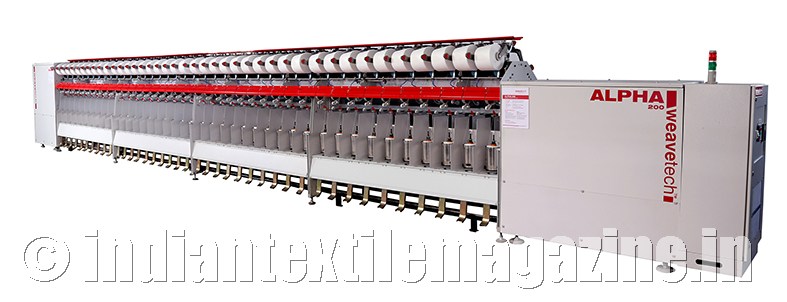
To cater to the fresh needs of the market, Weavetech produces state-of-the-art twisting and winding machinery, the most popular among them being the filament twisting and technical textile twisting machinery. It receives a major portion of the revenue from the Mumbai-Ahmadabad belt, with the technical textiles and value-added garments industry being the cash cards.
As the days pass by, the effects of demonetization and GST, the two major events that shook a greater part of the Indian economy, fade away. Even at its peak, most of the organized sector companies were able to sustain themselves. Weavetech saw no impact on its operations at all. Being a capital goods manufacturing unit, the company and its clientele do not operate on short-term plans and hence have no short-term consequences. “The capital goods industry does not have a one or two-year plan, but a five to seven-year plan. They think about the future thoroughly and make investments accordingly. Hence the short-term events do not affect this sector”, Mr. Thumar explained.
As the industry recovers successfully from the slack it faced in the previous year, most of the players and sectors are confident about the future growth that the Indian textile industry awaits. Almost all the sectors are working toward their set targets after the economy regains its pace.
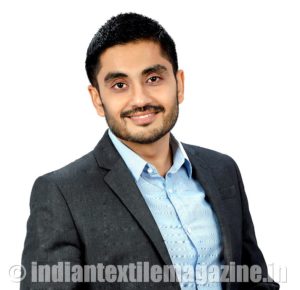
Weavetech, being one of the largest innovation-driven companies, has its own set goals for the upcoming years.
Mr. Thumar observed that not only his company but the entire industry is set to experience tremendous growth. With the new technology brought in by Industry 4.0 solutions, Weavetech will also move towards further growth focusing more on technologies that allow factory managers to have more data on their table to take better decisions.
Now weaving and processing are the two fastest growing segments of the textile industry. The company has set benchmarks in weaving & weaving-preparatory sectors in India, in terms of both technology and capacity. It recognizes the latent potential of the weaving and processing industry.
India has triumphed in the spinning sector, but a lot is yet to be accomplished in the weaving industry in terms of quality and technology. This is one industry that has recently attracted a lot of focus and has just begun to flourish. India still has a long way to go if the Indian players want to compete with countries like China, Bangladesh, Vietnam and even Pakistan which have already earned a good reputation for themselves in weaving & processing.
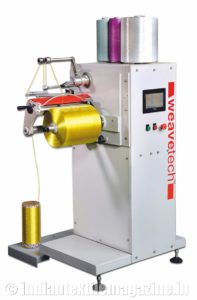
Apart from twisting machines, Weavetech also manufactures low-speed rapier looms with its focus on the powerloom sector. Currently around 90% of India’s weaving capacity rests with the small and medium-sized firms where the traditional practices still prevail. Add to that the single-process set-up of most of the SMEs that end up relying heavily on a close-knit cluster for all its technology & management support needs. This makes it extremely difficult for a small entrepreneur to upgrade just one process in the entire value chain while the pre- and post-process supports are not available. Hence, it becomes a highly expensive proposal for a small weaver to upgrade directly to the latest technology.
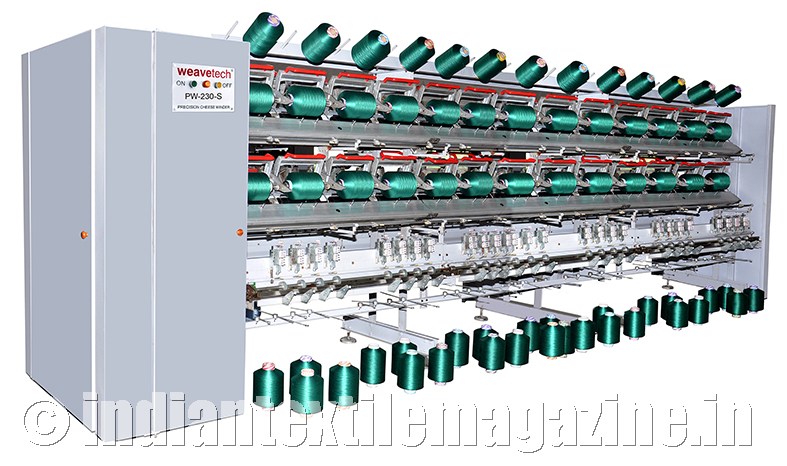
To address this issue, Weavetech has re-engineered its shuttleless rapier looms to run on the same infrastructure and skills as required by powerlooms. Such innovative re-engineering is key to the company’s best-value solutions.
The biggest advantage that these looms offer is that they can be easily accommodated in the existing powerloom infrastructure and run with the same skilled labour, enabling the customer to upgrade at a minimum cost and enter the shuttleless industry to earn maximum profit out of the technology. India is a growing market for the weaving sector, but yet has reached only 20% of its potential, as Mr. Thumar said.
Change in Government policies has hit the local manufacturers badly. The small manufacturers still struggle to overpower the after-effects, although the trade guilds and private players have urged modification of policies. This has made textiles one of the top priorities for the Government. The new policies aim at improving the conditions that the small textile players face after the GST roll-out.
Although this scenario has great scope for improvement, the Indian industry shows overall growth and recovery. As a part of the growing industry, Weavetech is contributing its share in the new innovations and advanced technology. It plans to feature its new technology in the upcoming Techtextil 2019 and the weaving technology in the upcoming GTTES Fair in 2019 where it be launching its indigenously developed high-speed rapier looms.
With the industry showing signs of good growth and the current trend turning favorable for the weaving sector, Weavetech has strong plans for the growth and innovation in the future. The company aims to become the single source supplier for winding, twisting and weaving machines.
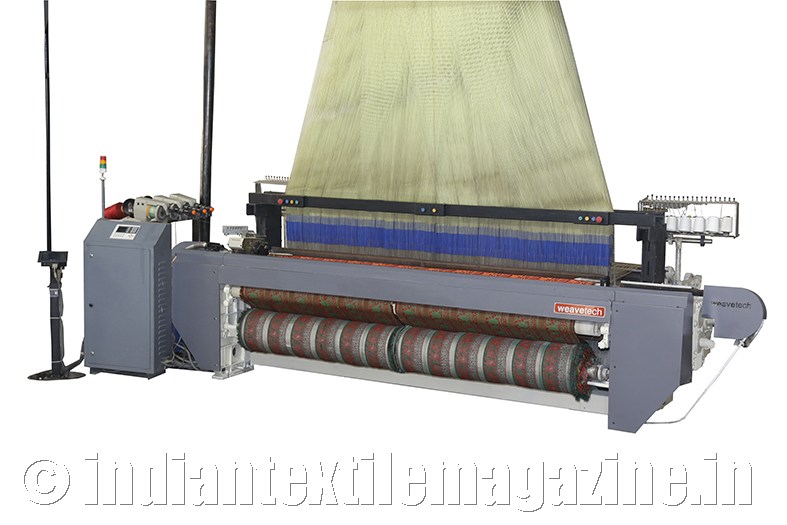
Mr. Vallabh Thumar, Managing Director, said: “Having the same technology & infrastructure as your competitor puts one at a disadvantage over a long-term. Understanding this, Weavetech has committed itself to re-engineering performance & innovation to bring the best value solutions for the industry to support its next phase of grown.”
A dynamic market requires dynamic players to cope with the uncertainties. Where keeping calm is necessary for understanding the market situation, making quick decisions is necessary for survival. Weavetech and its leaders show a perfect balance of both, showing a high potential to reach even greater heights in the textile industry at the global level.
